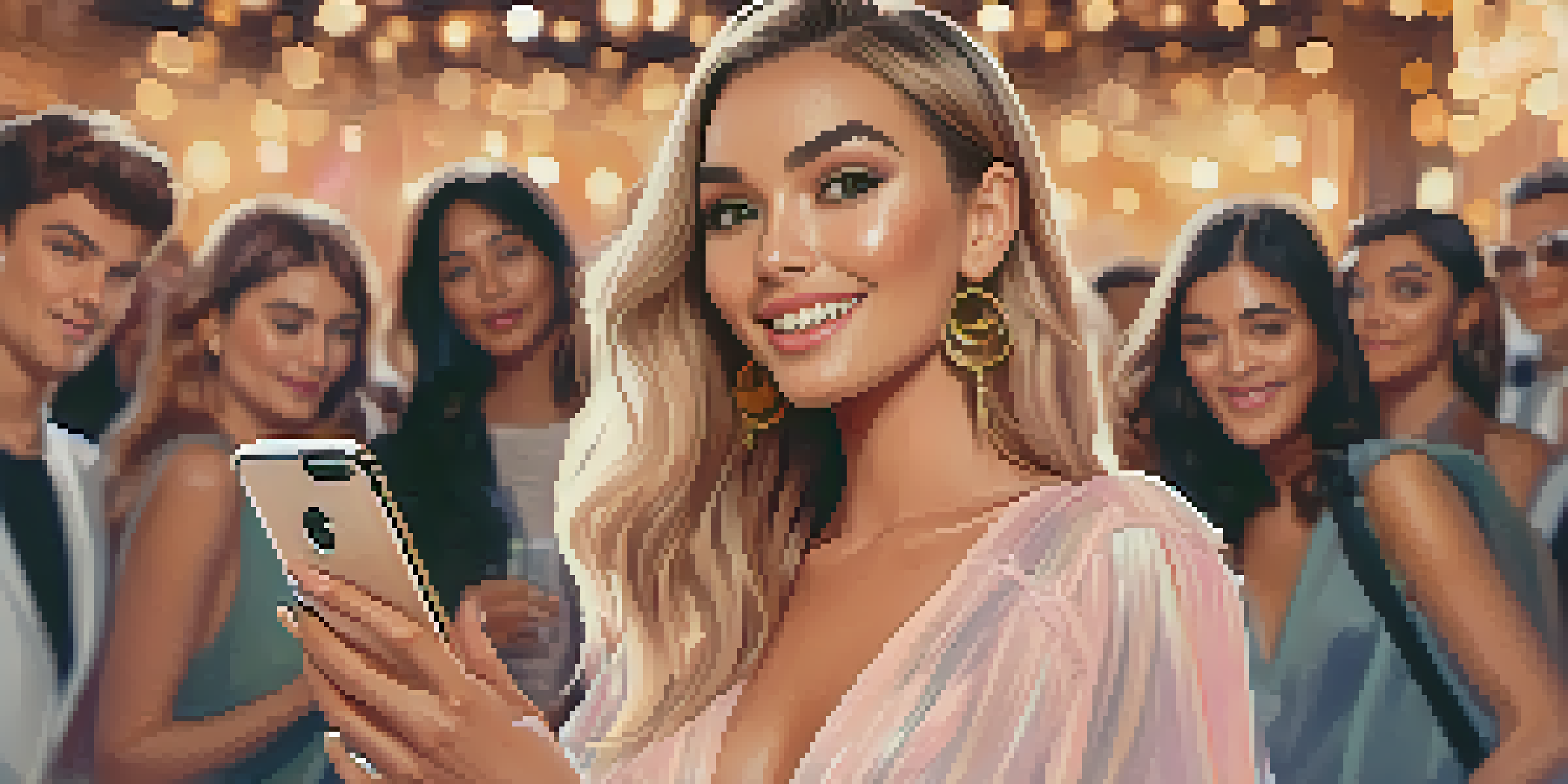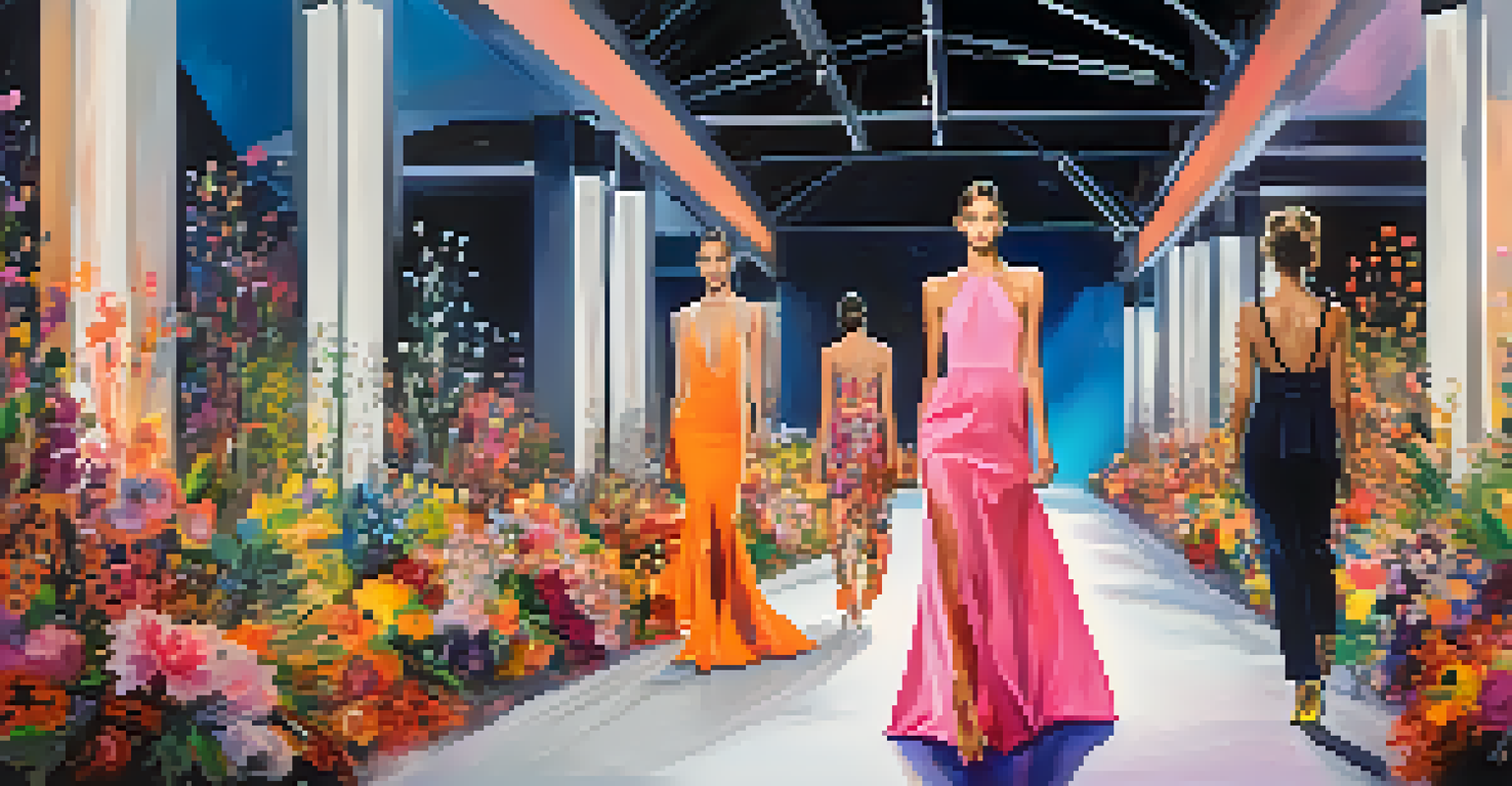The Influence of Social Media on Fashion Show Success

The Rise of Social Media in Fashion Industry
In recent years, social media has transformed the fashion landscape. Platforms like Instagram, TikTok, and Twitter have become essential tools for brands to reach their audience. The instant nature of these platforms allows designers to showcase their collections in real-time, making fashion more accessible than ever before.
Fashion is about dreaming and making other people dream.
Fashion shows are no longer exclusive to the front rows; they are now broadcasted to millions around the globe. This shift not only caters to fashion enthusiasts but also democratizes the industry, allowing a diverse range of voices to be heard. The rise of influencers has further blended these lines, giving rise to a new kind of celebrity in fashion.
As a result, designers must now consider their social media strategy alongside their traditional marketing efforts. This integration of social media into fashion showcases is crucial for maximizing reach and engagement, ultimately influencing the success of the event.
Building Anticipation Before the Show
Social media serves as a powerful tool for generating buzz leading up to a fashion show. Designers and brands use teaser posts, behind-the-scenes content, and countdowns to create excitement among followers. This pre-show engagement helps cultivate a sense of community and anticipation.

For instance, brands might share snippets of their latest designs or sneak peeks of the venue, enticing followers to stay tuned. The excitement generated on social media can often translate into higher attendance and viewership, both online and offline.
Social Media Transforms Fashion Shows
Platforms like Instagram and TikTok have revolutionized how brands engage with audiences, making fashion more accessible and inclusive.
Moreover, by engaging with their audience during this build-up, brands can foster loyalty and encourage word-of-mouth promotion. This organic reach is invaluable, as it amplifies the message beyond the brand's immediate followers, tapping into wider networks.
Real-Time Engagement During the Show
Once the fashion show begins, social media becomes a real-time commentary platform. Viewers can share their thoughts, reactions, and even critiques as the event unfolds. This immediacy creates a dynamic interaction between the brand and its audience, making them feel part of the experience.
In the world of fashion, social media is the new runway.
Hashtags play a crucial role here, allowing users to follow along and contribute to the conversation. For example, a fashion show might have an official hashtag that encourages attendees and online viewers to share their experiences, photos, and opinions.
Such engagement can lead to a viral moment, where a single post or tweet captures the attention of the fashion community and beyond. This kind of visibility can significantly enhance a brand's reputation and increase its reach, effectively boosting the show’s overall success.
Post-Show Content and Lasting Impressions
After the curtain falls, social media continues to play a pivotal role in shaping the narrative around the fashion show. Brands often share highlights, full runway videos, and interviews with designers and models to keep the conversation alive. This post-show content extends the lifespan of the event far beyond its conclusion.
Fans and followers eagerly share their favorite looks and moments, creating a ripple effect of engagement. The more a brand is discussed and shared, the greater its visibility becomes, which can lead to increased sales and brand loyalty.
Anticipation Builds Pre-Show
Teaser posts and behind-the-scenes content on social media generate excitement and community engagement before fashion shows.
Additionally, this feedback can be invaluable for designers as they gauge public reaction to their collections. Understanding audience preferences helps brands refine their future shows and collections, ensuring they stay relevant in a fast-paced industry.
The Role of Influencers and Bloggers
Influencers and fashion bloggers have become key players in the social media landscape, significantly impacting the success of fashion shows. Their ability to engage with audiences in a relatable manner gives them a unique edge. When they attend a fashion show, their reach can amplify the event's visibility exponentially.
Brands often collaborate with influencers to create bespoke content that showcases their collections in authentic ways. This partnership can lead to increased interest and attendance at the shows, as followers are more likely to engage with content created by someone they trust.
Moreover, influencers can provide immediate feedback and insights, helping brands understand what resonates with their target audience. Their involvement can turn a fashion show into a trending topic, influencing consumer behavior and driving sales.
Fashion Shows as Content Creation Opportunities
Fashion shows have evolved into significant content creation opportunities, thanks to social media. Brands leverage these events to produce a variety of content, from live streams to Instagram Stories, that can be repurposed across multiple platforms. This multi-channel approach maximizes exposure and engagement.
Moreover, the content generated during a fashion show can serve as a valuable asset for future marketing campaigns. By capturing high-quality visuals and engaging narratives, brands can extend the life of their collections well beyond the runway.
Influencers Amplify Brand Visibility
Collaborating with influencers allows brands to reach wider audiences and create authentic content that resonates with followers.
This strategy not only enhances the brand's online presence but also cultivates a deeper connection with their audience. When consumers feel involved and represented, they are more likely to remain loyal and share their experiences with others.
Challenges of Social Media in Fashion Shows
While social media has many advantages, it also presents challenges for fashion shows. The pressure to create viral content can sometimes overshadow the artistry and creativity behind the designs. Brands may feel compelled to conform to trends rather than staying true to their vision, which can dilute their unique identity.
Additionally, the fast-paced nature of social media can lead to negative feedback going viral just as quickly as positive content. A single misstep, whether in design or presentation, can result in a public relations nightmare if not managed correctly.

Brands must strike a balance between engaging with their audience and maintaining their artistic integrity. By focusing on authentic storytelling and staying true to their roots, they can navigate these challenges while still reaping the benefits of social media.